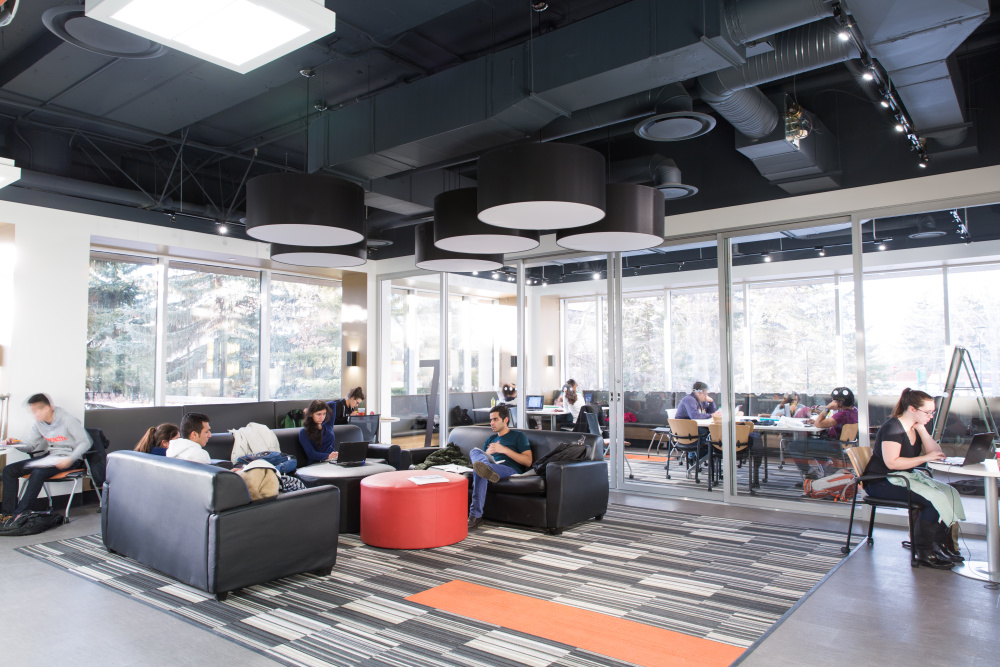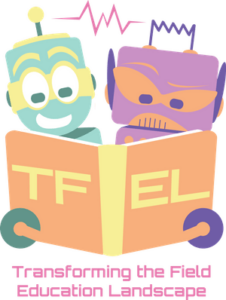Inventory of Promising Practices
CATEGORY 5: VALUING OPEN-MINDEDNESS AND FLEXIBILITY IN PRACTICUM PLACEMENTS

Encouraging an open mind and flexibility about practicum placements, organizations, or populations to increase field placement options.
Practice 1:
Field educators and supervisors are open to the potential for innovation in different methods and the challenges presented
Keeping an open mind about potential innovative practice settings broadens the number of opportunities available to students.
- “Make sure that the students feel that they can connect to their work in some way, even a small way. And when it comes to assignments, they need to build in a bit more openness to different methods, even as a compliment to their paper, photography, and other kinds of things that they could be doing. And help them to open that up because it’s not something they expect from graduate education or even in the field practices.” (Interview Participant, Prairie Region)
- “Well, I’ve been doing this for a very long time. And to me, one of the difficulties in preparing students for going into the field is making sure that we pay attention to the students understanding the context that they’re entering. So, what I tried to do, and not very successfully, is help the students figure out how they enter this space. Unfortunately, quite often students are perhaps interviewed for the placement, but given the scarcity of placement resources, quite often students wind up in a place that maybe isn’t their choice or somewhere that they wouldn’t necessarily have a great understanding and we just kind of drop them into the deep end of the pond. So, to me a wise practice is starting with the students understanding what it’s like to navigate those first few days and to try and get a bead on the small “c” culture of the place, the organizational culture, and the entire context of what is the history and background and what places this agency occupied in the broad sort of patchwork of services. So, navigational skills in the early days, I think, is a wise practice.” (Interview Participant, BC region)
Practice 2:
Incorporating group placements where students are involved in various activities in a collaborative approach
Encourages the development of collaborative and teamwork skills in practicum.
- “A promising practice that addresses some of the challenges we’re experiencing, in terms of placing students is exploring the notion of group placements and by that I mean both externally to the university with community partners and then internally. I think what is promising about this is that it helps address some of the numbers issues in terms of having so many students, but what we internally need to be doing to make this successful is supporting this through internal resources. So, I think a typical model in social work education, in terms of placement has been, placing students with an agency and letting agencies resource that whole supervisory and field instruction relationship.” (Interview Participant, Ontario Report)
- “[These] students were usually in groups of four or more within a setting. They may or may not have been with the same person on site. It was all on site. They may have shared a common, on-site field instructor. Again, someone who helped with their daily planning, structuring of their learning, observation by the students, as well as observing the students in their activities. And my role as remote, was, in fact, that I came to the site on average, one full day a week, dependent on the number of students there. So, I would have interaction with students as either a group, or individually, as well as with their field instructors. So, some of that rotated and was planned entirely by myself and the agency, but I wasn’t remote in the sense that I was actively involved in goal setting. And my experience was, quite honestly, the more I became engaged and present in a meaningful way at the agency site, the better the learning seemed to be for the students, and better satisfaction for the on-site field instructors. And from the organization, a lot of co-operation, wanting to engage in this kind of experience that year, there wasn’t a need to sell them. They were already looking forward to and assuming they would be engaged in this experience from year to year. (Interview Participant, Ontario Report)
- “I know not all field placements necessarily have multiple students, but at the hospital, for example, we constantly have four or five, so there’s quite a little group there. So, at (name of university) they have something called, what is it called now? Integration seminar I think, where they kind of get together and there’s a teacher facilitating the seminar. As a student, that was helpful, but what I really found helpful with peer debriefing within the field placement setting and it was very informal, but I think it happened organically because we were all friends in the same cohort, but if that doesn’t really happen, I wonder if maybe giving an opportunity for them to have their own sort of mini integrative seminar within the field placement. More specifically, perhaps that would be helpful too, in terms of helping introspection in a different place without that hierarchal difference of supervisor versus student, perhaps that will happen more openly rather than being like if I say the wrong thing, maybe she’s going to tell (name of university), and perhaps that could be a way of making like a reflective attitude happen I guess.” (Interview Participant, Quebec region)
- “One pair did a digital story, the three other pairs did websites, and in my last class that I just finished teaching yesterday, three brilliant websites were produced. The pieces that really created some curiosity and trepidation for me, was that the projects were community learning engagement activities based on community and cultural contexts. I’m still working on ways to visually present this but, how did this ignite curiosity, practice in relational-based discovery, learning and appreciative co-inquiry, research experience, the project, the knowledge mobilization, co-creating of action, awareness, translation and possibilities and then the colloquium, which is putting it out there. The winter group is still working on their websites and they’re still involved. My summer group now has Instagram and websites and podcasts going, and these projects are live still, which is mind boggling to me.” (Interview Participant, BC region)
Practice 3:
Encouraging flexibility around practicums to allow space and time for all circumstances
Flexibility in field education can help to create more equitable field learning opportunities for students including paid practicum.
- “[Paid placements are a] win-win for the students, I think, because they get paid and we don’t want, I mean, why we would ever not encourage that, especially in this day and age. When students need, you know, many of our students are very, very strapped for income and need that source and so this has been, I think, a boon to both students and their employers to know that. They have this employee who is so ambitious and to let them develop their skills within their place of employment.” (Interview Participant, Ontario Region)
- “…in some communities, half of our students are working full time in the agency that they hope to continue to work for and their agency is either paying for a portion of paying completely for it or giving them sort of holiday time to take it. So, we want to minimize the disruption to that agency, but we want to make sure that we’re allowing our students to have access to different ways and learning in the field. So, it’s not job sharing, because, certainly, students aren’t doing jobs while they’re doing their placements, but are there different ways that they can learn from different community members that sort of has a nice symbiotic relationship with their current employment? So that’s also been interesting, and in the case of one community we had, I think all of the students who are in the program worked for one particular agency, and it was impossible than to say okay every member of that agency now you take you know X number of hours a week off because then the agency couldn’t run. So, it really was a bit of a juggling act to try to sort that out, but it meant that we had to be flexible about timelines, about different kinds of creative ways of addressing different learning goals. So yeah, really kind of collaborative and student focused and community focused approach to field learning in that space.” (Interview Participant, BC region)





